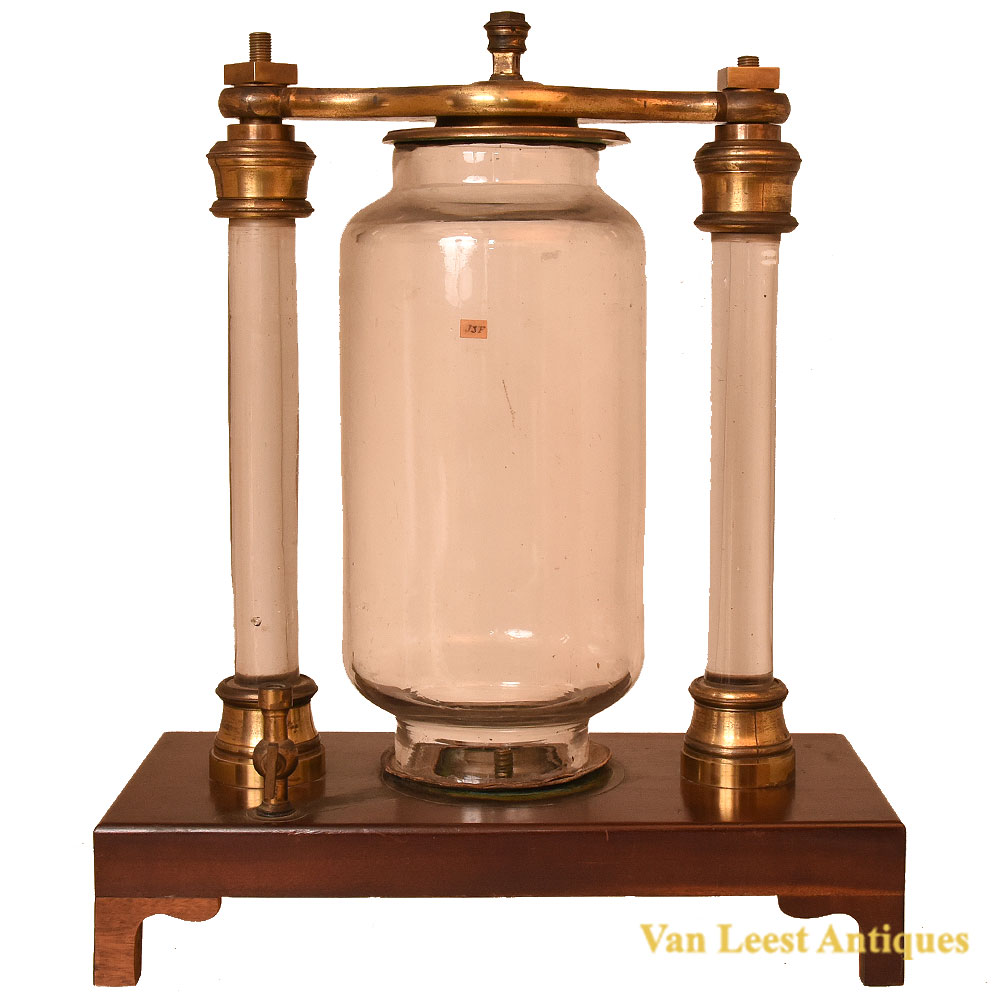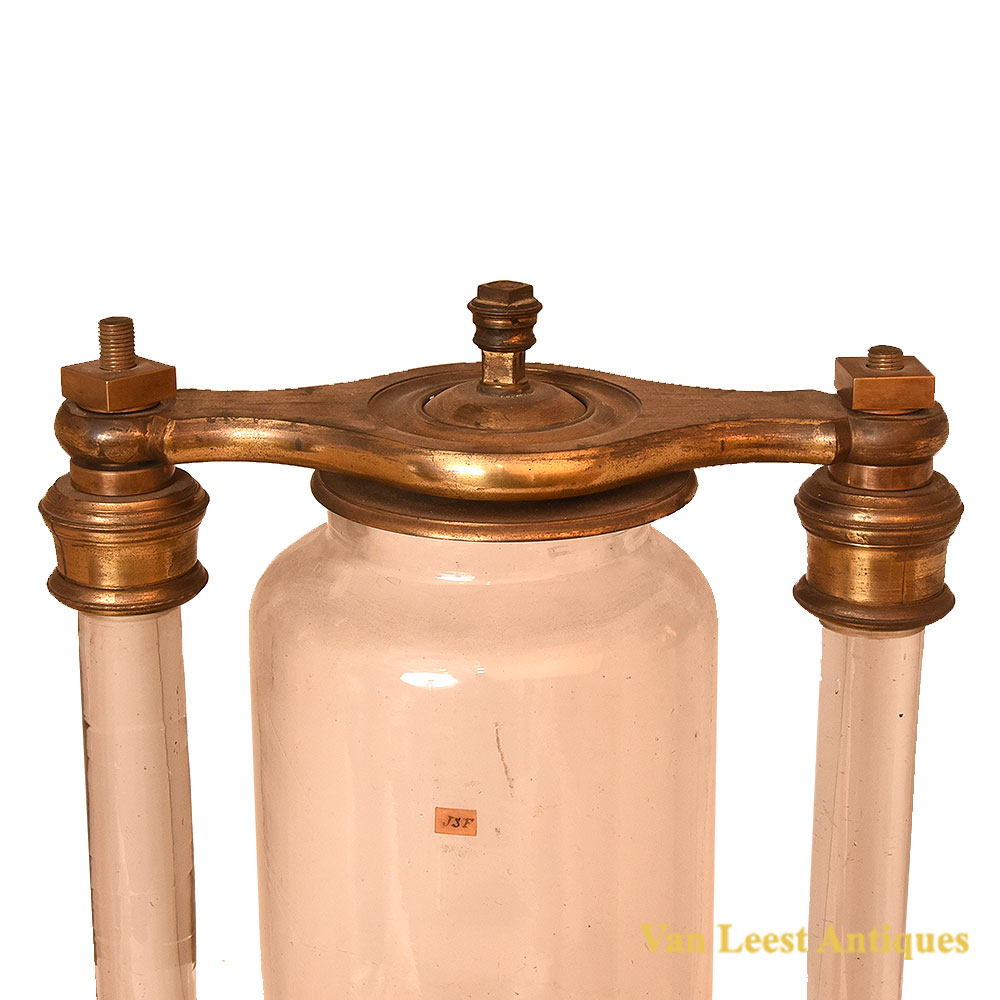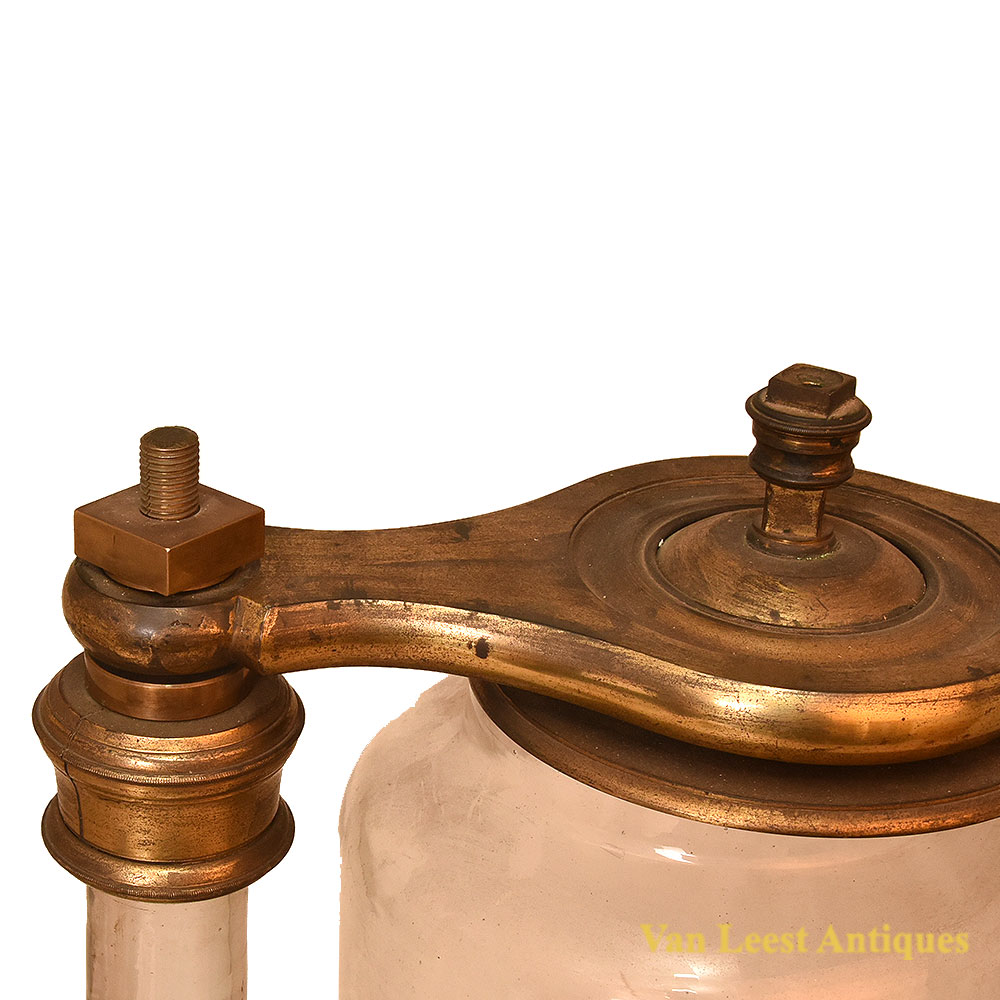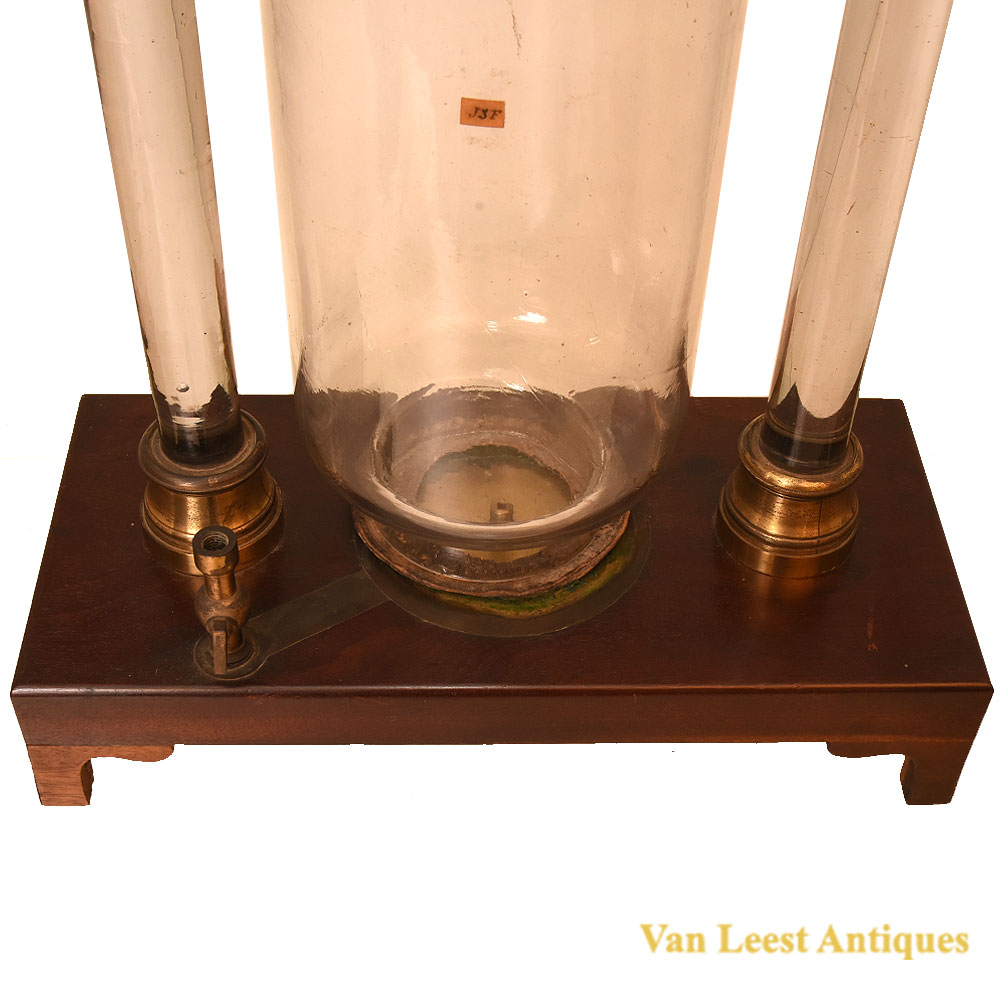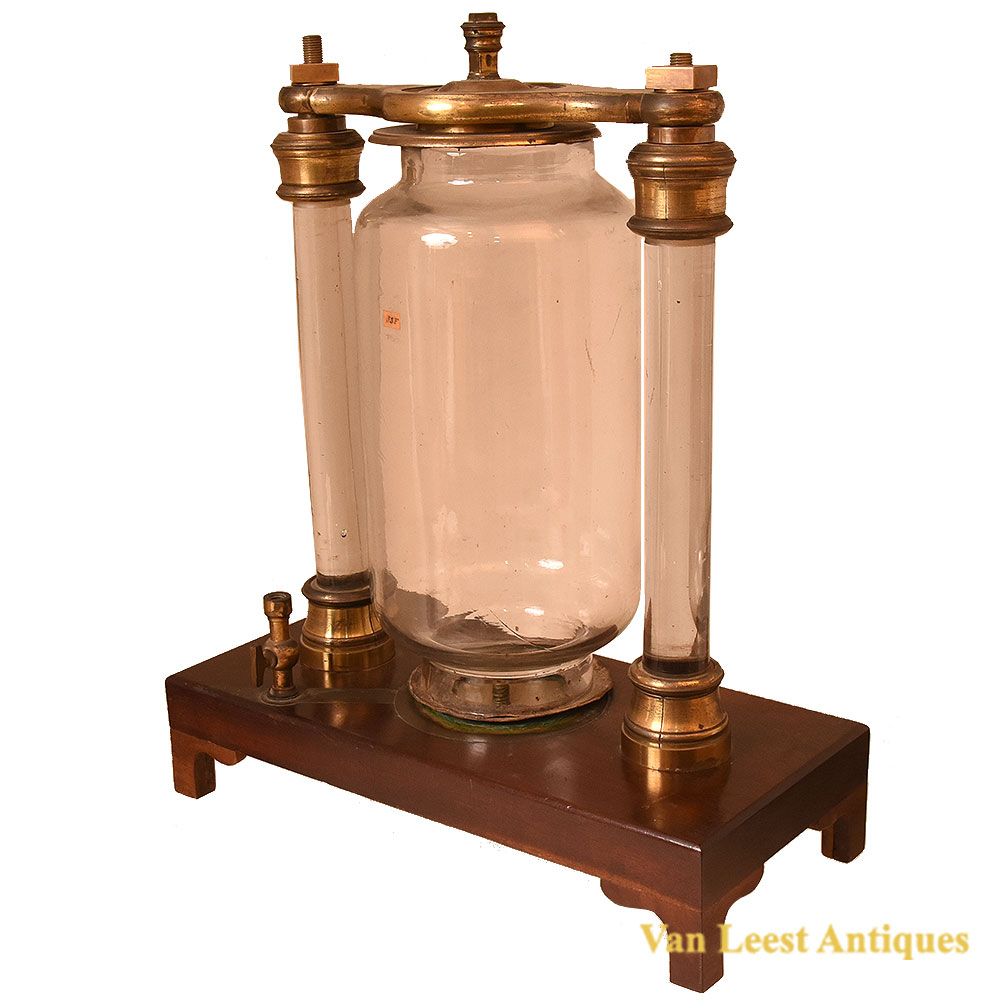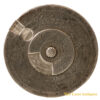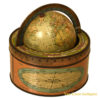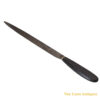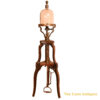Description
This test combination arises from a wooden stand with two screws in the bottom. To this screws two glass pillars are attached. In the middle a connection is made to the vacuum pump. A glass cylindrical tube is placed in the middle of the pillars and held in position with a brass plate when screwed tight together with the two pillars. On top of the cylinder a hole to which the test object would be appear for example a hook. Similar constructions are depicted in the Physices elementa mathematica of G.J. ‘s Gravesande and Francis Hauksbee’s Physico-Mechanical Experiments on Various Subjects.
In 1703 Francis Hauksbee proved by showing that a vacuum exists at the royal society at a similar vessel, it is now in the science museum. Contemporary book outline that this compression vessel could show different experiments with vacuum, for example the clockwork bell. If the air was removed from the glass chamber, the noise made by the bell became fainter. In a container where the air was compressed, the bell remained audible but the strokes of the hammer were slowed down.
Dimensions: 20,3 x 43,3 x 52 cm.
Find out more on www.vanleestantiques.com
Ask the Dealer
Dealer information
 Van Leest Antiques
Van Leest Antiques
Van Leest Antiques
Van Leest Antiques, based in Utrecht in the Netherlands, specialises in antique scientific and medical instruments. Their collection covers mainly scientific and medical antique instruments: barometers, globes and planataria, nautical instruments, anatomical models, and pharmacy items. Toon Van Leest travels regularly in Europe and visits trade fairs, auctions, and antique dealers to collect stock and to find pieces to fulfil his clients' unusual requests.
As well as being an avid antique collector and dealer, Toon Van Leest is also a dentist. He believes that antiques are a stable investment, not reliant on trends or fashion, and have truly lasting value. Above all, he says, antiques are timeless and never lose their beauty.



